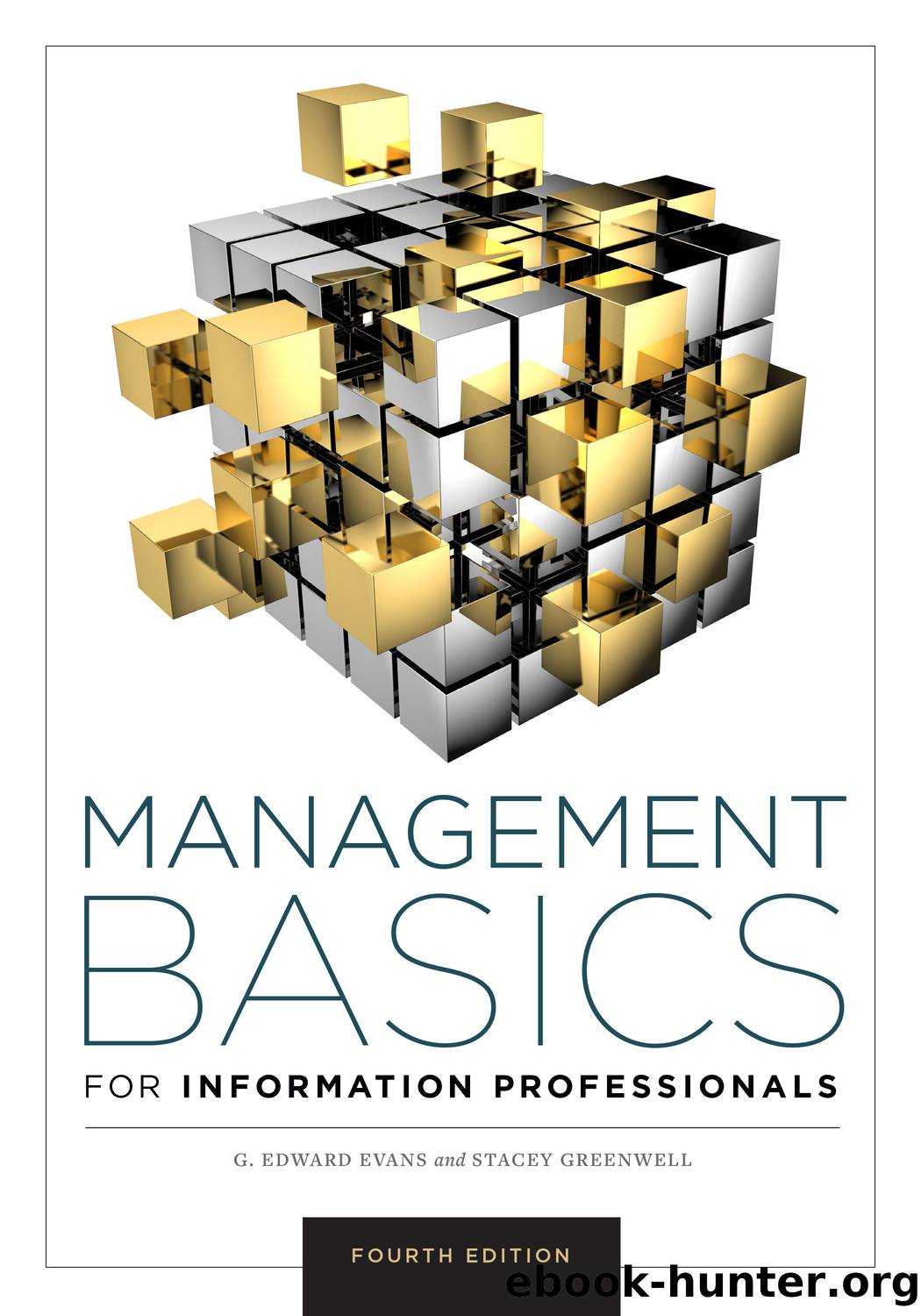Management Basics for Information Professionals by G. Edward Evans & Stacey Greenwell

Author:G. Edward Evans & Stacey Greenwell [Evans, G. Edward & Greenwell, Stacey]
Language: eng
Format: epub
Tags: LAN025000 Language Arts & Disciplines / Library & Information Science / General
Publisher: American Library Association
MARKETING
You can think of marketing as a social, as well as managerial, process, in that it is about communication between your library and the service community. It is, or should be, a two-way process of exchanging information between the library and its communityâaddressing what the community wants and what the library can provide. It is also a means for developing better relations between the library and its community. Good collection development librarians have been engaged in key marketing processes for years without thinking of it as âmarketing.â Marketing is finding out what your customers want and/or need and determining how to deliver those services.
Lisa Smith-Butler (2010) wrote, âAs a new librarian many years ago, I found the concept of marketing a library to be anathema. I was certain that sensible and intelligent patrons immediately understood the value and the necessity of a library. Marketing, in my opinion, was a dirty word, something done by MBAs marketing a product. Now, fifteen years later, I think my younger self naïveâ (pp. 7â8). She was not alone in her thinking at the time; perhaps newcomers to the field may hold similar beliefs. We firmly believe that in todayâs highly competitive information world, libraries must market themselves.
There is evidence that almost all libraries have a positive ROI; however, this fact is not widely known outside the profession. Marketing, advocacy, and sound public relations efforts can be effective tools in getting out the message that libraries do provide good returns on the funds invested in them.
In the past, libraries and archives saw little need to market their services. This was a perception issue rather than a lack of information on how to market libraries. Starting in the 1980s a number of texts on marketing appeared that focused on libraries (Cronin 1992; Kies 1987; McNeal 1992; Rowley 2001; Savard 2000; Walters 1992; Weingand 1998; Wood and Young 1988).
There are four key reasons why you should consider developing a marketing program. First and foremost, almost all archives and libraries face either a decreasing resource base or stronger competition for existing resources while needing to provide an increasing range of services. Second, as a result, user convenience usually decreasesâshorter service hours, fewer public service staff, and reductions in the number of locally owned information resources are some examples. Third, libraries frequently reach a smaller and smaller percentage of the total service population. (Although actual numbers of interactions and customers may increase over the previous year, but when the overall service population increases sharply there can be a drop in the percentage served.) Finally, all libraries face stiff competition as providers for transferring information from the creators or producers to the end consumer.
A sound marketing program provides the staff with market intelligence data that help them address these issues and develop a plan to increase both the number of customers and the percentage of total target population, or market share.
Download
This site does not store any files on its server. We only index and link to content provided by other sites. Please contact the content providers to delete copyright contents if any and email us, we'll remove relevant links or contents immediately.
Verus Israel: Study of the Relations Between Christians and Jews in the Roman Empire, AD 135-425 by Marcel Simon(578)
Phoenicians among Others: Why Migrants Mattered in the Ancient Mediterranean by Denise Demetriou(577)
Caesar Rules: The Emperor in the Changing Roman World (c. 50 BC â AD 565) by Olivier Hekster(558)
Europe, Strategy and Armed Forces by Sven Biscop Jo Coelmont(504)
american english file 1 student book 3rd edition by Unknown(492)
Banned in the U.S.A. : A Reference Guide to Book Censorship in Schools and Public Libraries by Herbert N. Foerstel(470)
Give Me Liberty, Seventh Edition by Foner Eric & DuVal Kathleen & McGirr Lisa(469)
Basic japanese A grammar and workbook by Unknown(466)
The Roman World 44 BC-AD 180 by Martin Goodman(459)
Reading Colonial Japan by Mason Michele;Lee Helen;(458)
DS001-THE MAN OF BRONZE by J.R.A(444)
The Dangerous Life and Ideas of Diogenes the Cynic by Jean-Manuel Roubineau(441)
Introducing Christian Ethics by Samuel Wells and Ben Quash with Rebekah Eklund(436)
Imperial Rome AD 193 - 284 by Ando Clifford(433)
The Oxford History of World War II by Richard Overy(433)
Literary Mathematics by Michael Gavin;(394)
Language Hacking Mandarin by Benny Lewis & Dr. Licheng Gu(382)
Catiline by Henrik Ibsen--Delphi Classics (Illustrated) by Henrik Ibsen(369)
How to Reach the 9.0 in IELTS Academic Reading by IELTS Medical(359)
